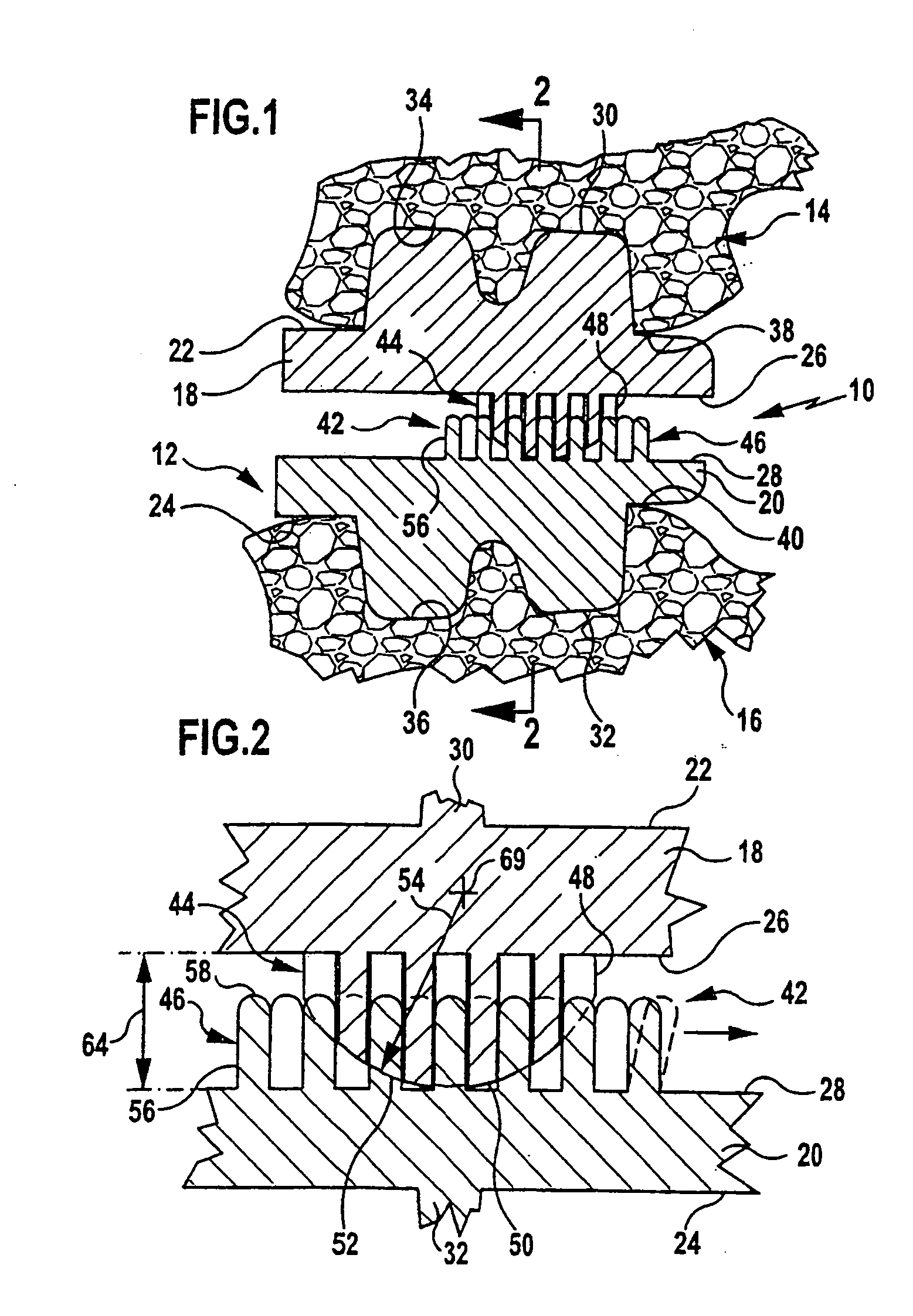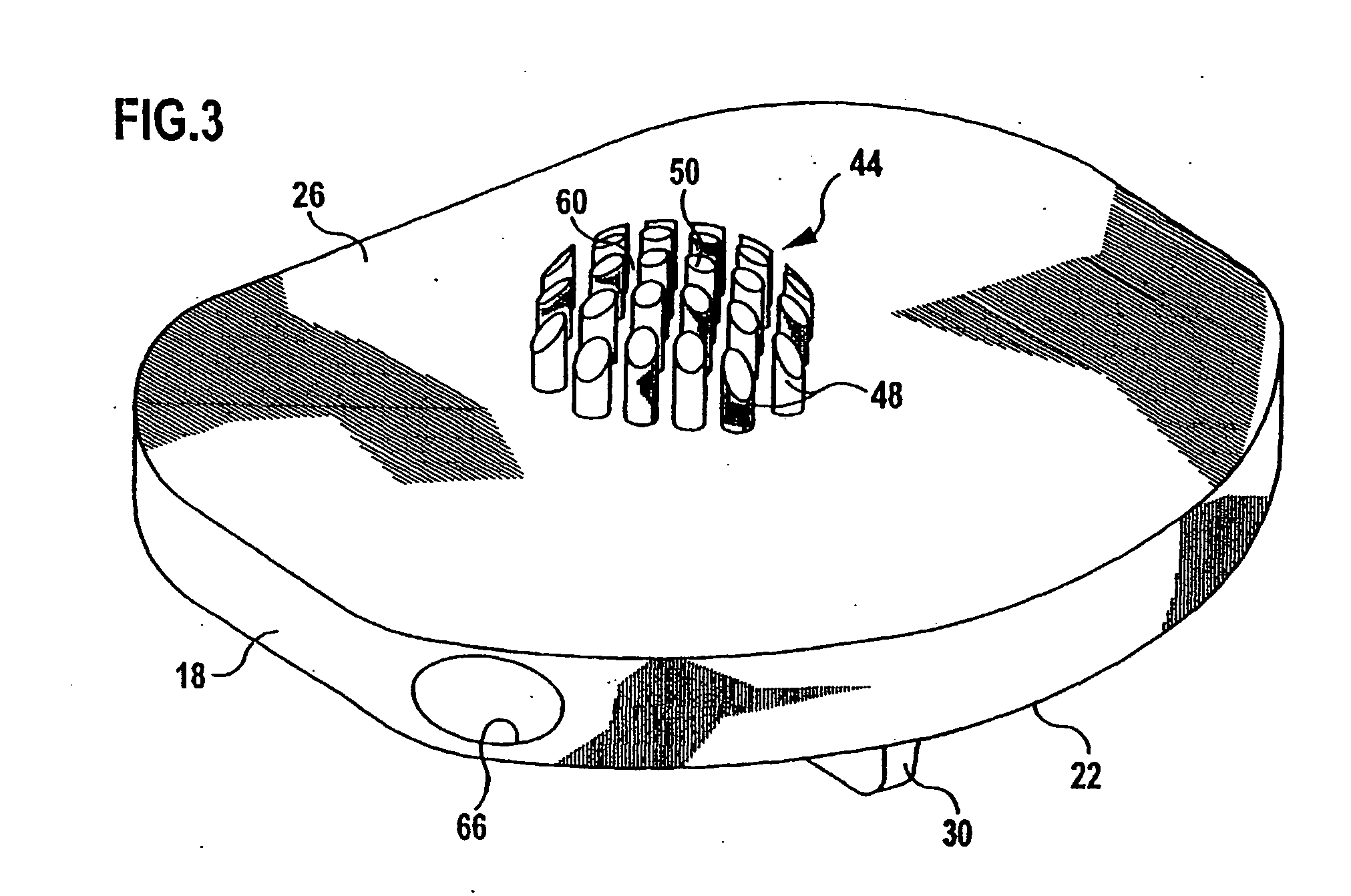Intervertebral implant
a technology of intervertebral discs and implants, which is applied in the field of intervertebral discs, can solve the problems of wear on the joint surfaces, inability to achieve mobility that is identical to the natural mobility of the intervertebral disks,
- Summary
- Abstract
- Description
- Claims
- Application Information
AI Technical Summary
Benefits of technology
Problems solved by technology
Method used
Image
Examples
Embodiment Construction
[0046] Although the invention is illustrated and described herein with reference to specific embodiments, the invention is not intended to be limited to the details shown. Rather, various modifications may be made in the details within the scope and range of equivalents of the claims and without departing from the invention.
[0047]FIG. 1 shows an intervertebral disk prosthesis designated as a whole by the reference number 10. It is inserted into an intervertebral space 12 between a first vertebral body 14 and a second vertebral body 16.
[0048] The intervertebral disk prosthesis 10 has a two-part design and comprises a first carrier plate 18 and a second carrier plate 20, which comprise a respective anchoring surface 22 and 24 and a respective bearing surface 26 and 28. Narrow, plate-like anchoring ribs 30 and 32, which are driven into the vertebral bodies 14 and 16, respectively, to anchor the carrier plates 18 and 20 or are inserted into recesses 34 and 36 prepared therein for this...
PUM
 Login to View More
Login to View More Abstract
Description
Claims
Application Information
 Login to View More
Login to View More - R&D
- Intellectual Property
- Life Sciences
- Materials
- Tech Scout
- Unparalleled Data Quality
- Higher Quality Content
- 60% Fewer Hallucinations
Browse by: Latest US Patents, China's latest patents, Technical Efficacy Thesaurus, Application Domain, Technology Topic, Popular Technical Reports.
© 2025 PatSnap. All rights reserved.Legal|Privacy policy|Modern Slavery Act Transparency Statement|Sitemap|About US| Contact US: help@patsnap.com



